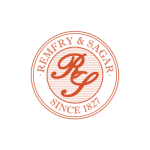“Creativity may well be the last legal unfair competitive advantage we can take to run over the competition.” – Dave Trott.
To leave a lasting impression, companies often use comparative advertising to cast their products in a more favourable light than the goods being sold by their competitors. Such advertising is legally permissible as long as it does not portray competing products in a bad light and disparage them.
Statutes in play
A few decades ago, comparative advertising in the Indian market was looked down upon by advertising companies. However, as the Indian market opened up to global products in the 1990s, increased competition fuelled a need to glorify and compare the advantages of one’s products with those of competitors. As a natural corollary, brand owners began resorting to hitherto unused tactics of catching consumer attention thereby changing the landscape of advertising dynamics in the country.
To safeguard the interests of both companies and consumers, legislative provisions were introduced first under the Monopolies and Restrictive Trade Practices Act, 1984, that was later replaced by the Competition Act of 2002. Currently, disparagement by advertising is governed by the Trade Marks Act, 1999 under Sections 29(8) and 30(1), which provide for infringement of a registered trademark by way of advertising (and list the exceptions thereto). The Code of Self-regulation issued by the Advertising Standards Council of India as well as the Consumer Protection Act, 2019 provide alternate remedies.
Judicial trends
Earlier judicial precedents indicated a slight tilt towards regarding plaintiffs as the affected party. The courts were of the view that an advertisement cannot be permitted to discredit the goods of another - as was observed in PepsiCo v Hindustan Coca-Cola [2003 SCC OnLine Del 802] by the Division Bench of the Delhi High Court. Here the court stated that both the intention and manner of the commercial and the message which was sought to be conveyed would be taken into consideration to decide disparagement.
In the same context, the 1998 decision of the Calcutta High Court in Reckitt & Colman of India v MP Ramachandran [1998 SCC OnLine Cal 422] is of enormous significance, where the court held that “comparative advertising is permissible, however, a promoter of a product is not entitled to defame the goods of its competitor”. It observed that:
A tradesman is entitled to declare his goods to be best in the world, even though the declaration is untrue;
He can also say that his goods are better than his competitors, even though such statement is untrue;
For the purpose of saying that his goods are the best in the world or his goods are better than his competitors, he can even compare the advantages of his goods over the goods of others;
He however, cannot, while saying that his goods are better than his competitors, say that his competitors' goods are bad; and
If there is no defamation to the goods or to the manufacturer of such goods no action lies.
At present, the courts not only take into account whether there has been any use of a competitor’s trademark but also if the statements made are correct. To simplify, as long as what is being claimed is true and correct, and can be substantiated, say by way of a survey conducted by an independent agency, a claim can be made by a rival even if it has allegedly resulted in loss of reputation of a competitor’s brand or product.
In the case of Havells India Ltd & Anr v Amritanshu Khaitan & Ors [2015 SCC OnLine Del 8115], decided by the Delhi High Court, it was held that an advertiser can compare only one or more material, relevant, verifiable and representative feature/s of the goods and services in question.
The recent case of Hindustan Unilever Limited v USV Private Limited of 2021 caught wide attention. The plaintiff, Hindustan Unilever Limited (HUL), filed a suit against the defendant USV Private Limited (USV) for disparagement as USV had launched an advertising campaign claiming that its SEBAMED soap had a pH level of 5.5 and seemingly implied that soaps with a pH level higher than SEBAMED were harmful.
USV’s advertisements displayed and orally mentioned HUL’s bathing soaps ‘Lux’, ‘Dove’ and ‘Pears’ and on the basis of the pH levels of the said soaps being higher than 5.5, insinuated their use on one’s skin was akin to using HUL’s reputed detergent soap ’Rin’.
The Bombay High Court held that if USV removed the reference to ’Rin’, then there would be no disparaging content, as comparison of pH level does not in itself amount to disparagement. USV was further instructed to substitute the categorisation of soaps as ‘safe’ and ‘not safe’ on the basis of pH value with the words ‘ideal’ and ‘not ideal’.
Need for clarity
Upon analysis, the courts do seem to be taking a more lenient view in matters of comparative advertising. That said, given that there is no sui generis statute governing advertising in India, a need is felt for more specific regulations to ensure clarity in the regulatory framework – particularly so in the digital era which has dramatically altered how brands reach and communicate with consumers.
CA Brijesh
Partner, Remfry & Sagar
Shubham Shende
Associate, Remfry & Sagar













